How AI Monitors Compost Temperature
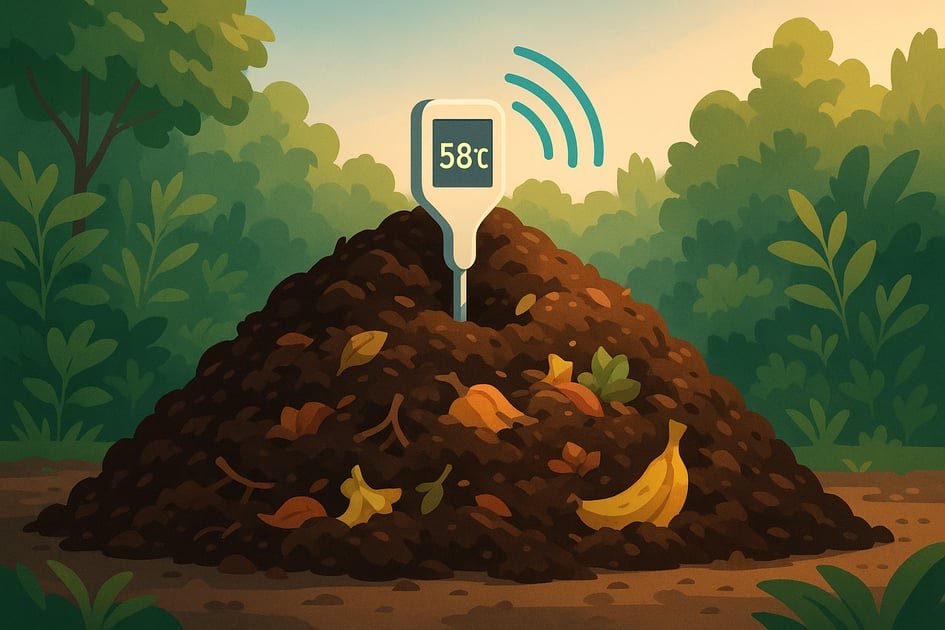
AI makes composting easier by automating temperature monitoring. Sensors track heat, moisture, and oxygen levels in real time, while AI adjusts airflow and moisture to keep conditions ideal for decomposition. This ensures faster breakdown, kills harmful pathogens, and reduces manual effort.
Key Points:
- Why Temperature Matters: Composting has 3 stages - moderate heat starts decomposition, high heat kills pathogens, and cooling stabilizes the compost. Tracking these stages ensures smooth progress.
- How It Works:
- Sensors: Measure temperature, moisture, and oxygen with high accuracy.
- AI Adjustments: Automatically balances airflow and moisture to maintain optimal conditions.
- Data Insights: AI learns from past cycles to improve future composting.
- Results: Better compost quality, less manual work, and more efficient energy use.
Whether you're composting at home or managing large-scale operations, AI tools simplify the process for consistent results.
Monty Monitor and AI for Composting

Temperature's Impact on Composting
Temperature plays a key role in how quickly materials break down and in eliminating harmful pathogens.
The Composting Process and Temperature
Composting happens in three main temperature stages:
- Initial stage: Moderate heat allows bacteria to begin breaking down organic matter.
- Active stage: Higher temperatures speed up decomposition and help kill off harmful pathogens.
- Cooling stage: As temperatures drop, helpful microbes return to balance and stabilize the compost.
Keeping track of these stages is essential to make any needed adjustments during the process.
Basics of Temperature Monitoring
Regularly checking the temperature is critical for effective composting. If it gets too hot, beneficial microbes can be harmed, which slows decomposition. On the other hand, low temperatures reduce microbial activity and allow pathogens to survive.
Checking temperatures at different depths can help identify problems such as insufficient moisture or poor airflow. If you notice temperature changes, it may be time to adjust the material mix, add water, or improve aeration to keep the process on track.
Sensors and AI Systems
Modern compost monitoring combines sensor networks with AI to provide real-time data, ensuring compost breaks down efficiently. Below, we dive into the key sensors that power these systems.
Common Sensor Types
AI-driven compost monitoring relies on three primary types of sensors:
Temperature Sensors
RTDs (Resistance Temperature Detectors) deliver ±0.1°F accuracy through stainless steel probes with ceramic insulation. For instance, the WeRadiate Dual Temperature Sensor™ uses a dual-point 3-foot rod to map thermal gradients effectively.
Moisture Sensors
Capacitive moisture sensors track water content, maintaining it within the ideal 40–60% range. Devices like the BioGecko CM-2200 feature self-cleaning titanium electrodes and maintain 92% accuracy even after 18 months of use.
Oxygen Monitors
Electrochemical sensors measure oxygen levels, aiming for the optimal 5–20% range. The Reotemp OxyTemp probe combines oxygen and temperature readings into one device, capable of reaching depths of up to 6 feet.
| Sensor Type | Measurement Range | Typical Accuracy | Maintenance Interval |
|---|---|---|---|
| RTD Temperature | -67°F to +257°F | ±0.1°F | Annual calibration |
| Capacitive Moisture | 0–100% | ±2% | Quarterly cleaning |
| Electrochemical O₂ | 0–25% | ±1.5% | Quarterly membrane replacement |
Data Collection Methods
AI uses various methods to gather and process data from these sensors, ensuring consistent and accurate compost monitoring. These systems handle multiple sensor readings simultaneously. For example, the Bosch BME688 integrates data from 16 gas indices, along with temperature and humidity, to predict microbial activity.
Some platforms report up to a 30% reduction in ammonia emissions by prioritizing RTD readings during rapid temperature changes and validating them with infrared sensor data.
Key data collection approaches include:
- Wireless Transmission: LoRaWAN technology provides a 50 km range and up to 7 years of battery life.
- Redundant Measurements: Multiple sensors are installed per compost pile, with the median value used for accuracy.
- Environmental Protection: IP68-rated housings shield sensors from moisture and debris.
- Automated Calibration: Systems adjust baselines based on the specific materials and conditions.
🚀 Ready to Reinvent Your Garden?
Join thousands of homeowners who have transformed their gardens using our AI design tool. Upload one photo to explore endless possibilities.
Get your AI garden designs →AI Analysis and Adjustments
AI systems use machine learning to analyze sensor data in real time, identifying changes in compost conditions and making adjustments before small issues turn into bigger problems. These adjustments are directly tied to the sensor readings mentioned earlier, ensuring that the composting process stays on track through automated monitoring and quick responses.
Predictive AI Features
AI tools in compost management constantly compare current temperature data with historical trends. If they detect irregularities, like uneven core temperatures, the system adjusts factors such as aeration or moisture. It also factors in external data like ambient temperature and humidity to maintain balance. This fast-response system also builds a foundation for improving processes over time by tracking and analyzing data.
Tracking Data Over Time
Over multiple composting cycles, AI systems collect and store temperature and environmental data. By identifying recurring patterns, the system fine-tunes its recommendations. For example, it can suggest better turning schedules or pinpoint the right moments for intervention. This approach helps maintain consistent compost quality, even when dealing with seasonal or local changes.
sbb-itb-4d6a8dd
Automated Compost Management
AI-powered systems simplify compost management by automating key processes, reducing the need for constant monitoring. These systems rely on integrated sensors and control mechanisms to maintain the ideal conditions for composting.
Temperature and Air Flow Control
AI systems use tools like waterproof temperature probes (e.g., DS18B20 sensors) to monitor heat levels across compost piles. When temperatures reach critical thresholds, automated adjustments to airflow help stabilize conditions.
For instance, the CompostBot Pro employs a PID algorithm to modify airflow rates between 10–30 CFM based on thermal gradients, cutting manual intervention by 80% in commercial operations (BioCycle, 2024).
Variable-speed fans and solenoid-controlled vents further regulate oxygen levels, ensuring efficient decomposition while minimizing energy use. The EarthFlow system, for example, keeps oxygen levels above 5%, improving decomposition rates by 22% compared to manual methods.
Reencle's Smart Composter takes a different approach, activating fans in 30-second bursts followed by 90-second pauses when temperatures approach 158°F. This method reduces energy consumption by 40% compared to continuous operation, as confirmed by UC Davis research in 2023.
In addition to temperature and airflow, moisture levels and feedstock composition are carefully managed to enhance composting efficiency.
Moisture and Material Management
Efficient composting also depends on proper moisture levels and material balance. These systems incorporate advanced components to achieve this:
| Component | Function | Performance Metric |
|---|---|---|
| Capacitive Sensors | Monitor moisture at multiple depths | ±3% accuracy |
| Automated Irrigation | Activates if moisture drops below 45% | Maintains 50–60% moisture |
| Computer Vision | Analyzes feedstock composition | Within 5% C:N tolerance |
These technologies work together to optimize decomposition. For example, the Lomi Pod ensures consistent hydration through precise moisture management, while Tero's AI scanner evaluates incoming materials to automatically balance carbon-to-nitrogen ratios.
Commercial results highlight the effectiveness of these systems. Madrid's FCC Medio Ambiente facility uses 15 IoT sensors per compost pile to maintain 95% temperature compliance. Automated blowers activate when temperatures exceed 149°F, reducing aeration energy use by 40% while maintaining stable composting conditions.
To ensure reliability, redundant sensor setups with majority voting are used. For instance, the Zera Food Recycler employs three thermocouples and defaults to time-based aeration if temperature readings vary by more than 9°F.
For home composters, tools like AIGardenPlanner offer tailored support. The platform analyzes garden waste photos and syncs with Bluetooth-enabled sensors to provide personalized weekly action plans, helping users maintain optimal composting conditions.
AI Monitoring Results and Uses
Key Advantages
AI-driven monitoring systems take composting to the next level by managing temperature, moisture, and airflow with precision. This constant tracking helps avoid problems like overheating or poor aeration, ensuring consistent compost quality. It also reduces the need for manual labor and improves energy use. Whether you're a home gardener or running a large composting facility, these systems offer better control and smoother operations.
Tools for Home Composting
Modern home composting systems now include AI-based sensors to keep an eye on temperature and moisture levels. Many of these systems come with wireless connectivity and send automated alerts, allowing users to track compost progress directly from their smartphones. These tools make it easier for urban gardeners to manage smaller compost piles effectively, offering a practical solution for compact spaces.
AIGardenPlanner and Composting
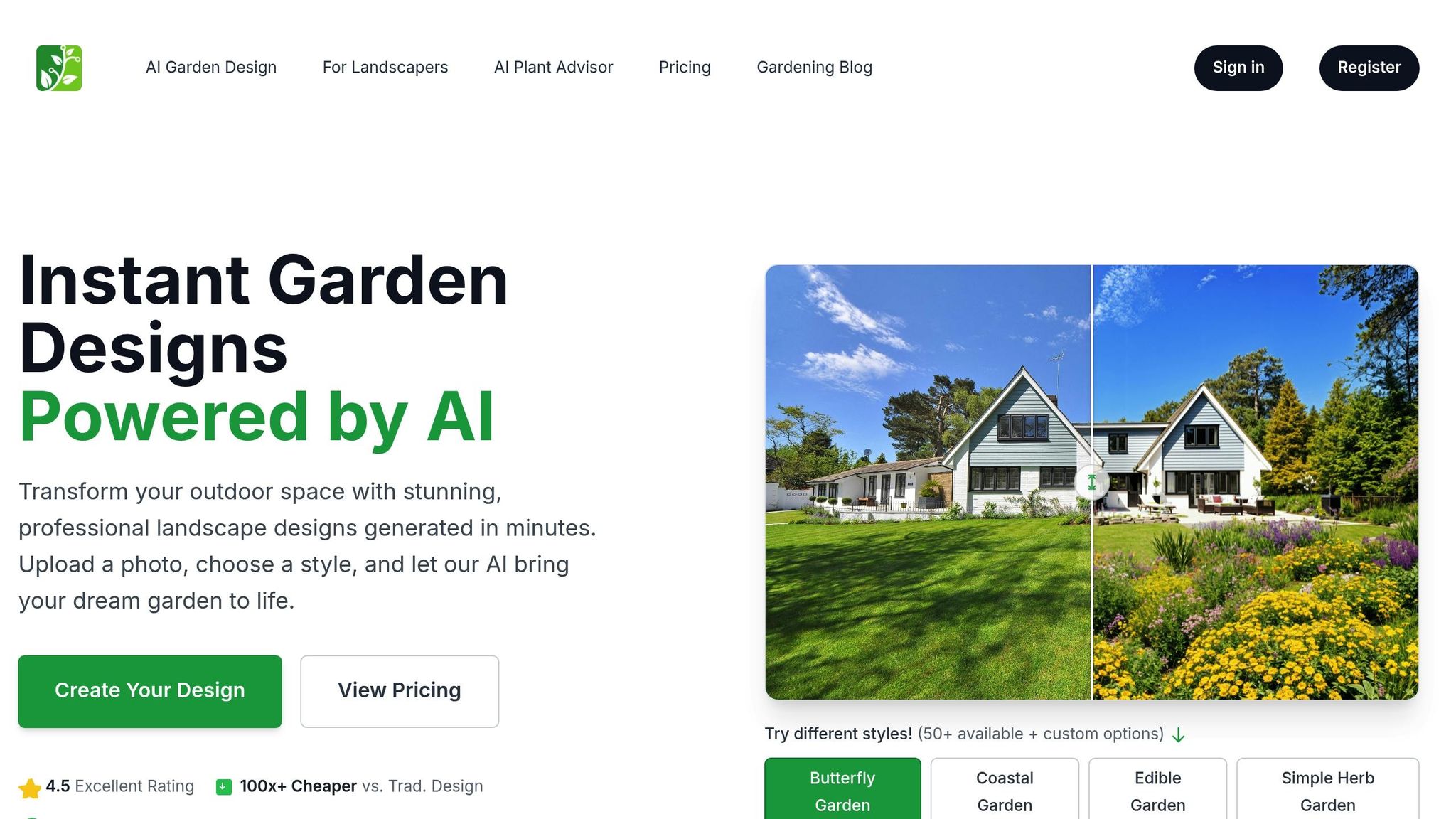
Intelligent platforms like AIGardenPlanner go beyond basic automation to streamline home composting. Working alongside smart composting devices, the platform's AI Plant Advisor provides tailored tips for managing your compost and garden. From selecting the best spot for your pile to balancing materials and adjusting for seasonal changes, it covers all the bases. Plus, its growing guides show how to use finished compost in garden beds, helping plants thrive with nutrient-rich organic matter.
Conclusion
AI is changing how home gardeners monitor compost temperatures. With sensors and automated systems, the need for manual checks is reduced, while optimal conditions are maintained for effective composting. This precise control and real-time tracking lead to consistently better composting results.
In the future, integrated platforms will make compost management even easier. Tools like AIGardenPlanner can help gardeners design efficient composting areas, while AI Plant Advisor ensures composting practices align with overall garden health. Together, these tools maximize the benefits of well-managed organic material and support a more efficient gardening process.
As technology progresses, AI-powered systems will continue to simplify temperature monitoring, helping gardeners maintain ideal conditions for composting. These advancements not only improve organic waste management but also set new benchmarks for sustainable gardening practices.
🎨 Visualize Your Dream Garden Today!
Transform any outdoor space into a professional landscape design in minutes. Just upload a photo, choose your style, and let our AI do the rest.
Start your garden transformation now →FAQs
How does AI help monitor and regulate compost temperature more effectively than traditional methods?
AI enhances composting by using advanced sensors and algorithms to monitor and regulate temperature with precision. These systems collect real-time data on temperature, moisture, and other key factors, ensuring optimal composting conditions are maintained automatically.
Unlike traditional methods that rely on manual checks, AI can detect fluctuations quickly and make adjustments, such as increasing airflow or moisture, to keep the composting process efficient. This not only improves the quality of the compost but also saves time and effort for users.
What sensors are used in AI-powered compost monitoring, and how do they help manage temperature?
AI-driven compost monitoring systems commonly use temperature sensors, humidity sensors, and gas sensors to optimize the composting process. These sensors work together to track key environmental factors inside the compost pile.
Temperature sensors are essential for monitoring heat levels, ensuring the compost stays within the ideal range of 135°F to 160°F for effective decomposition. Humidity sensors measure moisture levels to prevent the pile from becoming too dry or overly saturated, both of which can slow down the process. Gas sensors detect emissions like carbon dioxide or methane, providing insights into microbial activity and overall compost health.
By continuously gathering data, these sensors enable AI systems to make real-time adjustments, such as turning the compost or adding water, ensuring an efficient and sustainable composting process.
Can AI systems adjust compost temperature based on changing conditions and materials?
Yes, AI systems can adapt to varying environmental conditions and compost materials over time. By using advanced sensors and algorithms, these systems monitor factors like temperature, moisture levels, and oxygen content. They then adjust operations, such as aeration or moisture control, to maintain optimal composting conditions.
This adaptability not only ensures efficient composting but also helps reduce waste and improve the quality of the final compost product. With continuous monitoring and learning, AI systems can fine-tune their responses to meet the unique needs of different composting setups.
Related posts
Related Articles
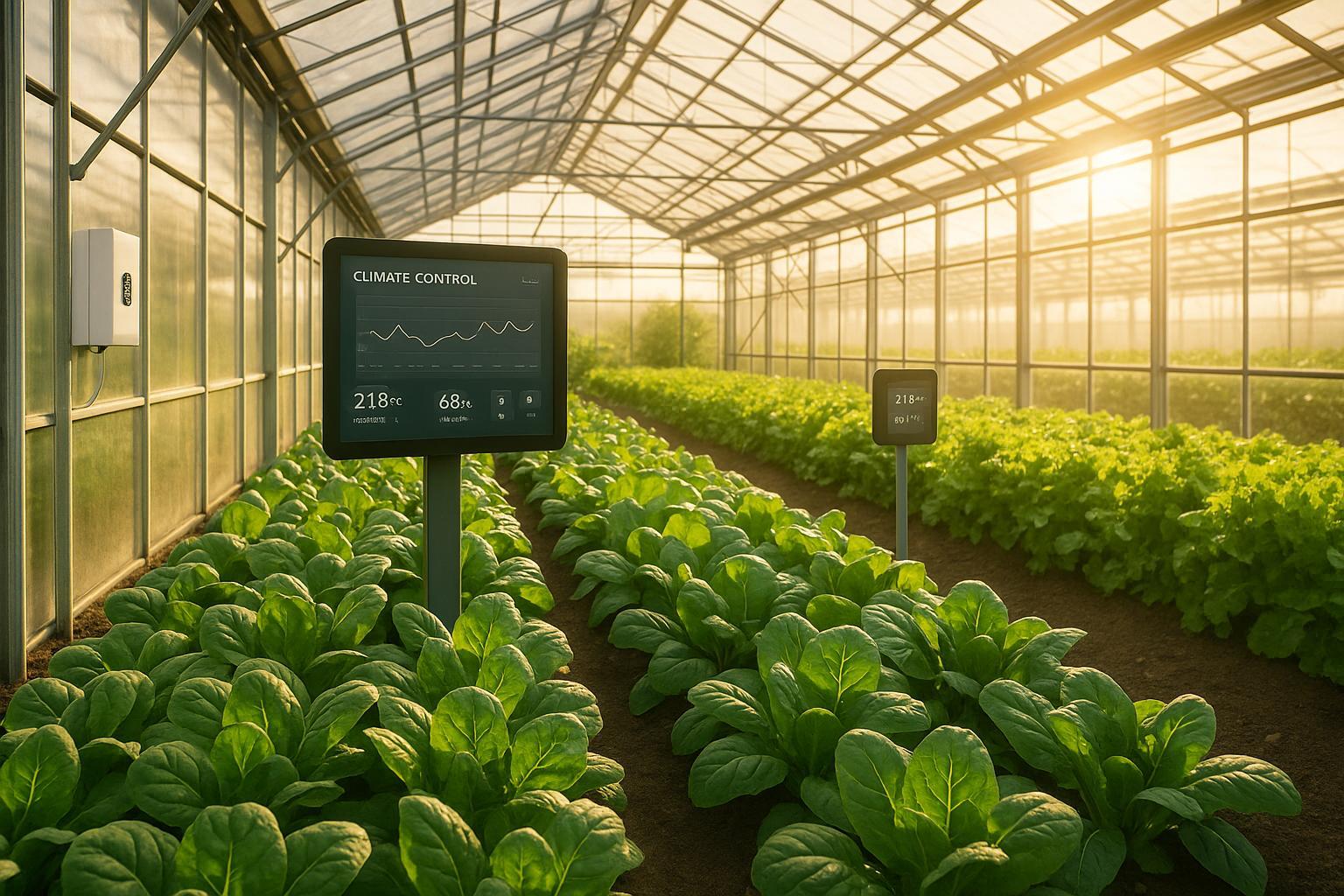
AI-Powered Greenhouse Climate Control Trends 2025
Explore how AI is revolutionizing greenhouse climate control, enhancing efficiency, and ensuring optimal crop health through advanced technologies.
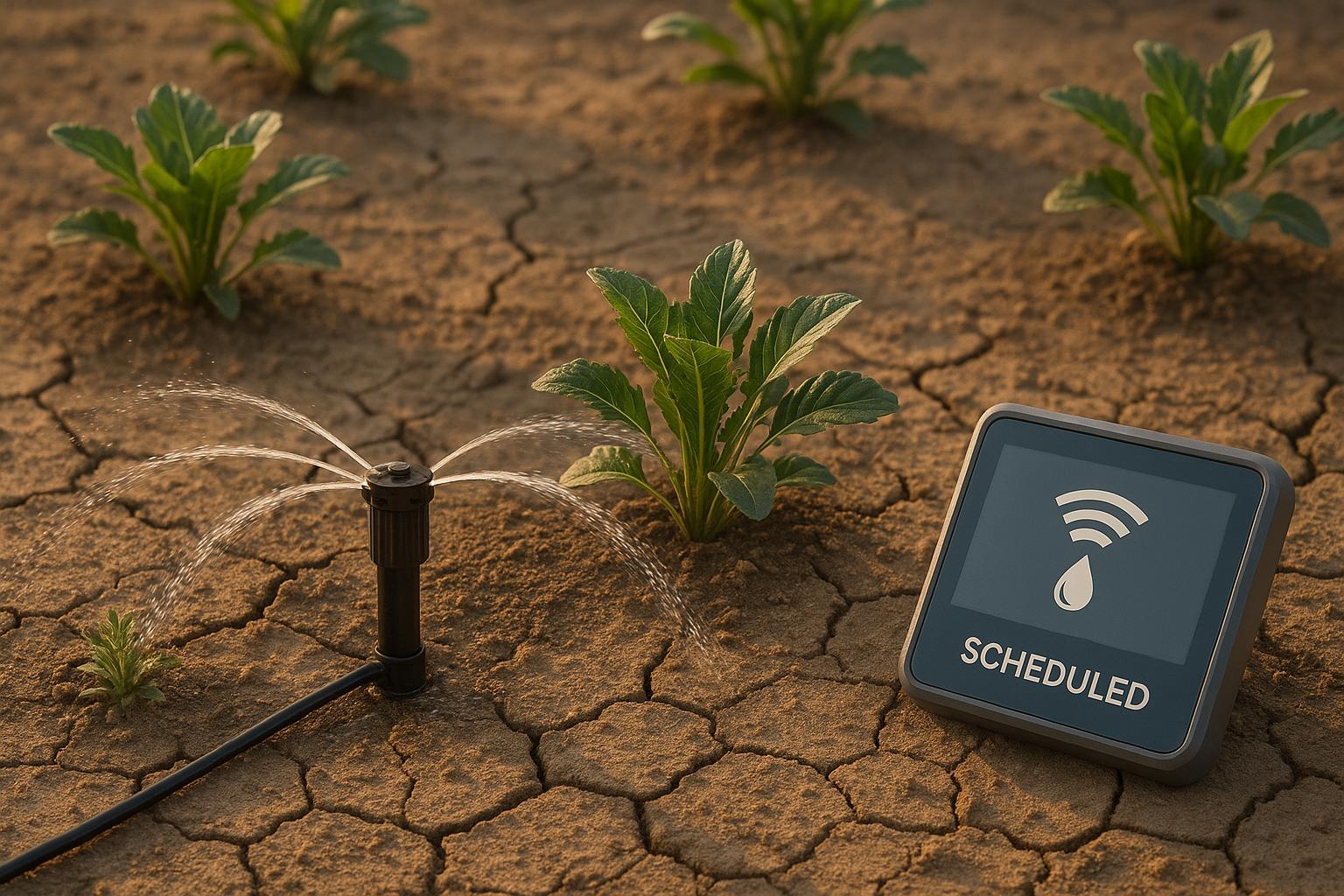
AI Watering Schedules for Drought Conditions
AI-driven irrigation systems optimize water use during droughts, improving plant health and conserving resources through real-time data and machine learning.

How to Easily Unscrew a Stuck Hose: A Step-by-Step Guide
Learn the essential tools and techniques needed to effectively unscrew a stuck hose and prevent common household frustrations. Find out how to use lubricants, wrenches, and pliers for smooth hose maintenance.
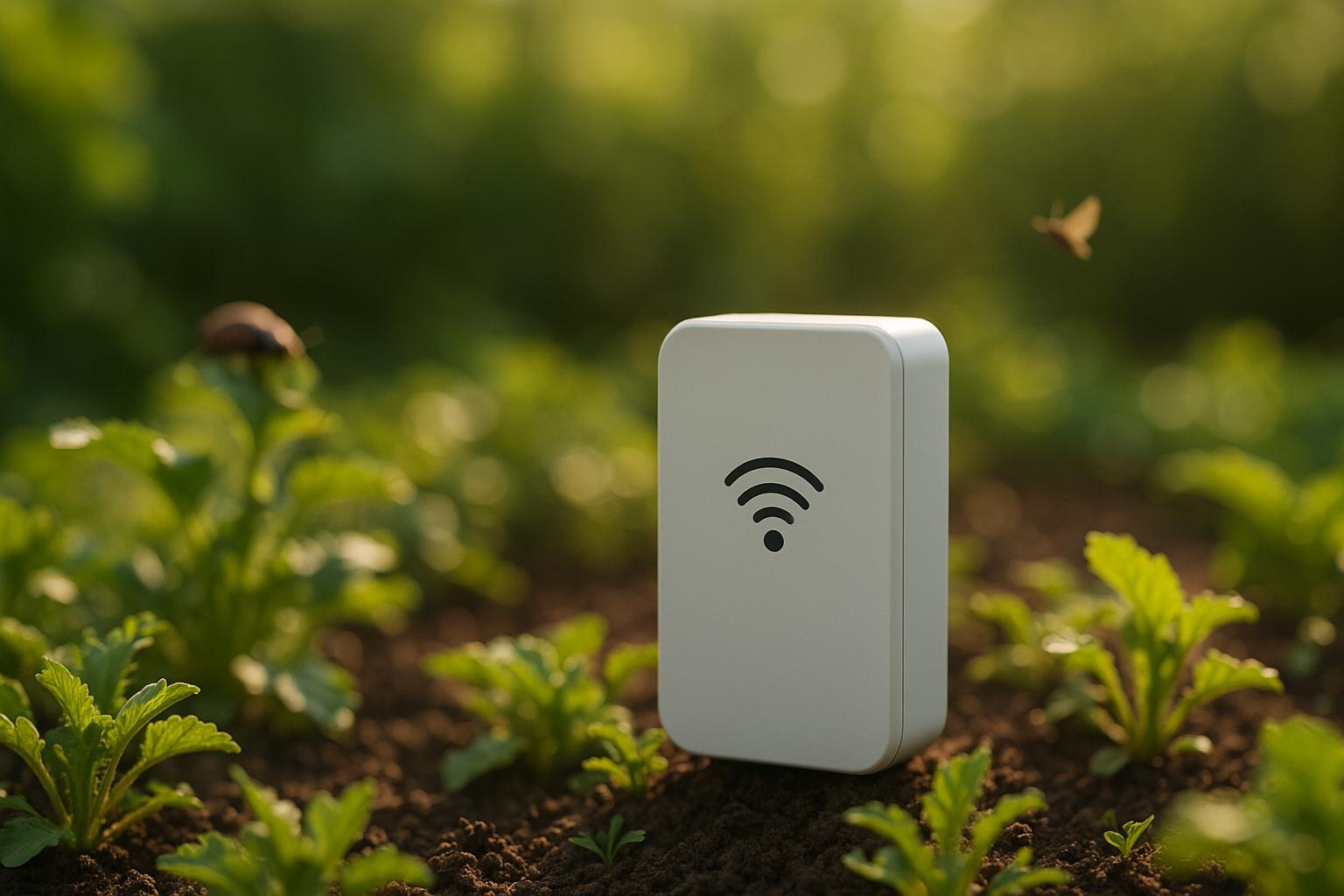
Ultimate Guide to Acoustic Pest Monitoring
Explore acoustic pest monitoring, a sound-based method that detects pests early, reduces pesticide use, and enhances garden management with AI.
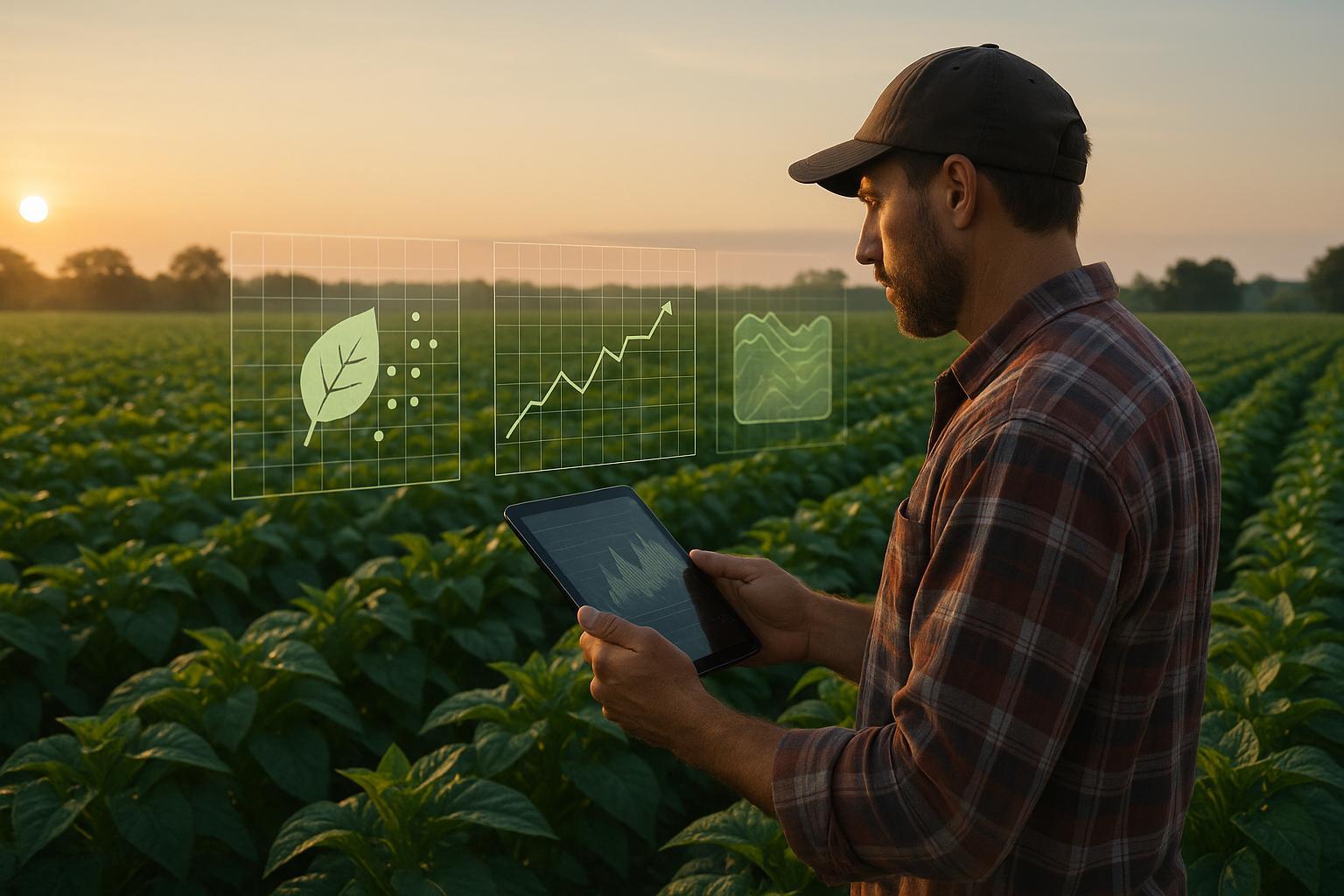
How AI Predicts Plant Disease Outbreaks
Explore how AI revolutionizes agriculture by predicting plant diseases early, empowering farmers with data-driven insights for better crop health.
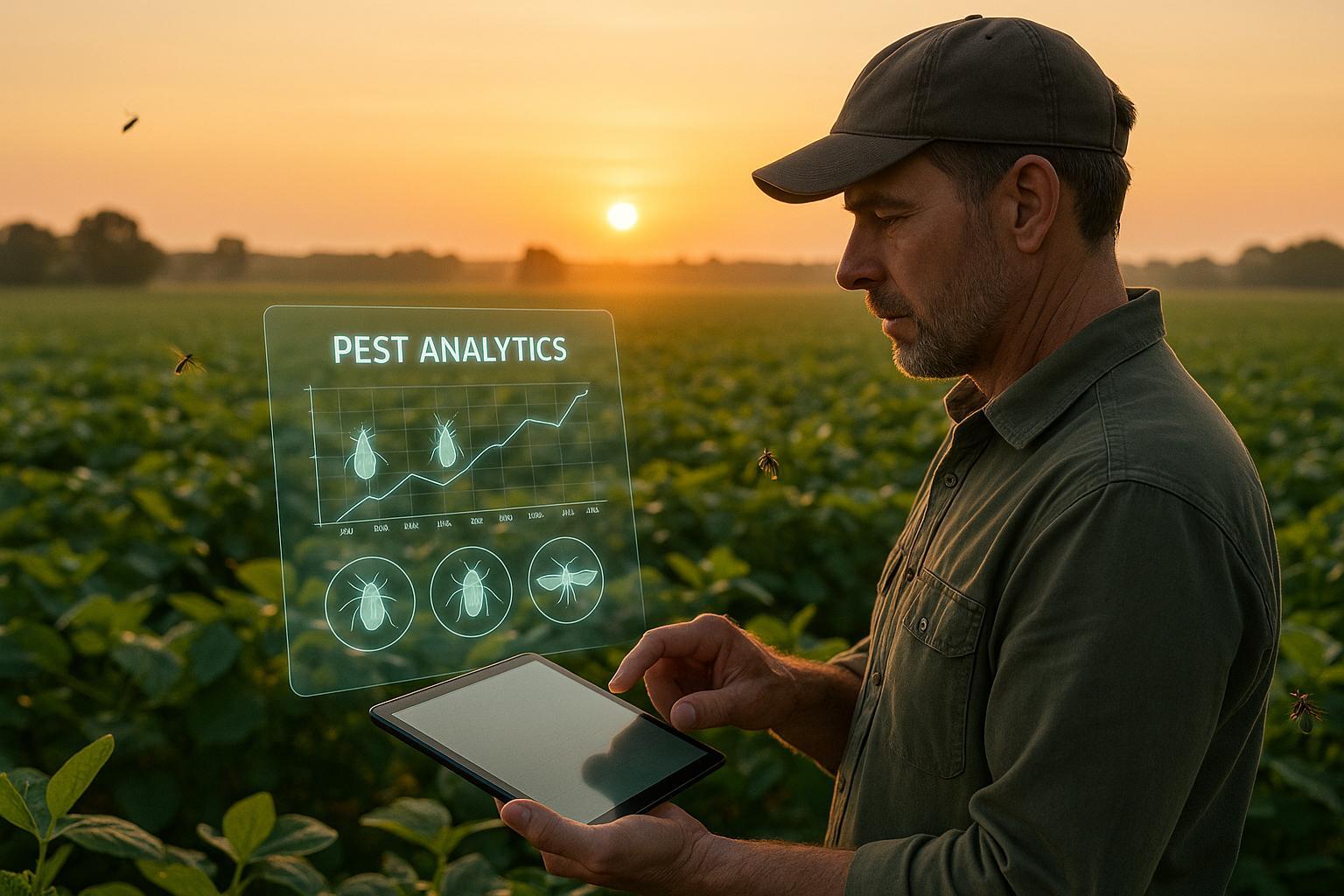
Real-Time Pest Analytics for Seasonal Yields
Explore how real-time pest analytics revolutionizes farming by enhancing yields, reducing pesticide use, and promoting sustainable practices.